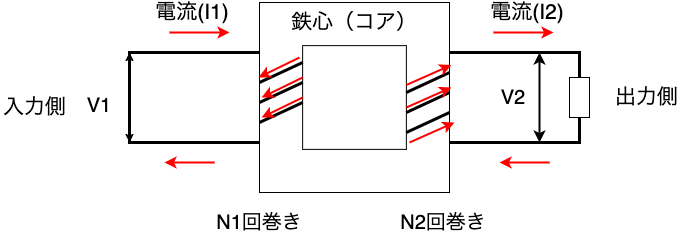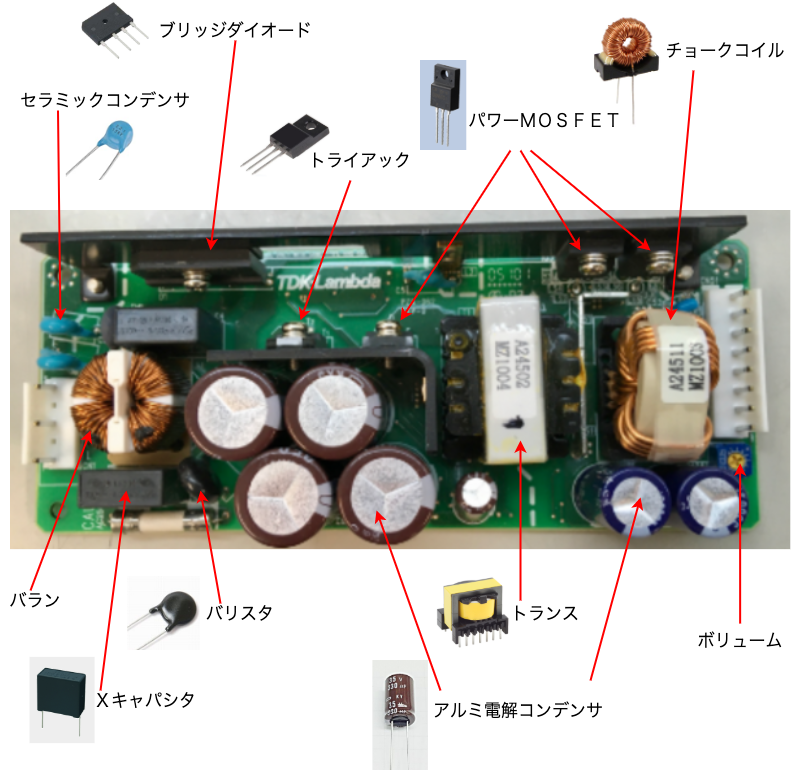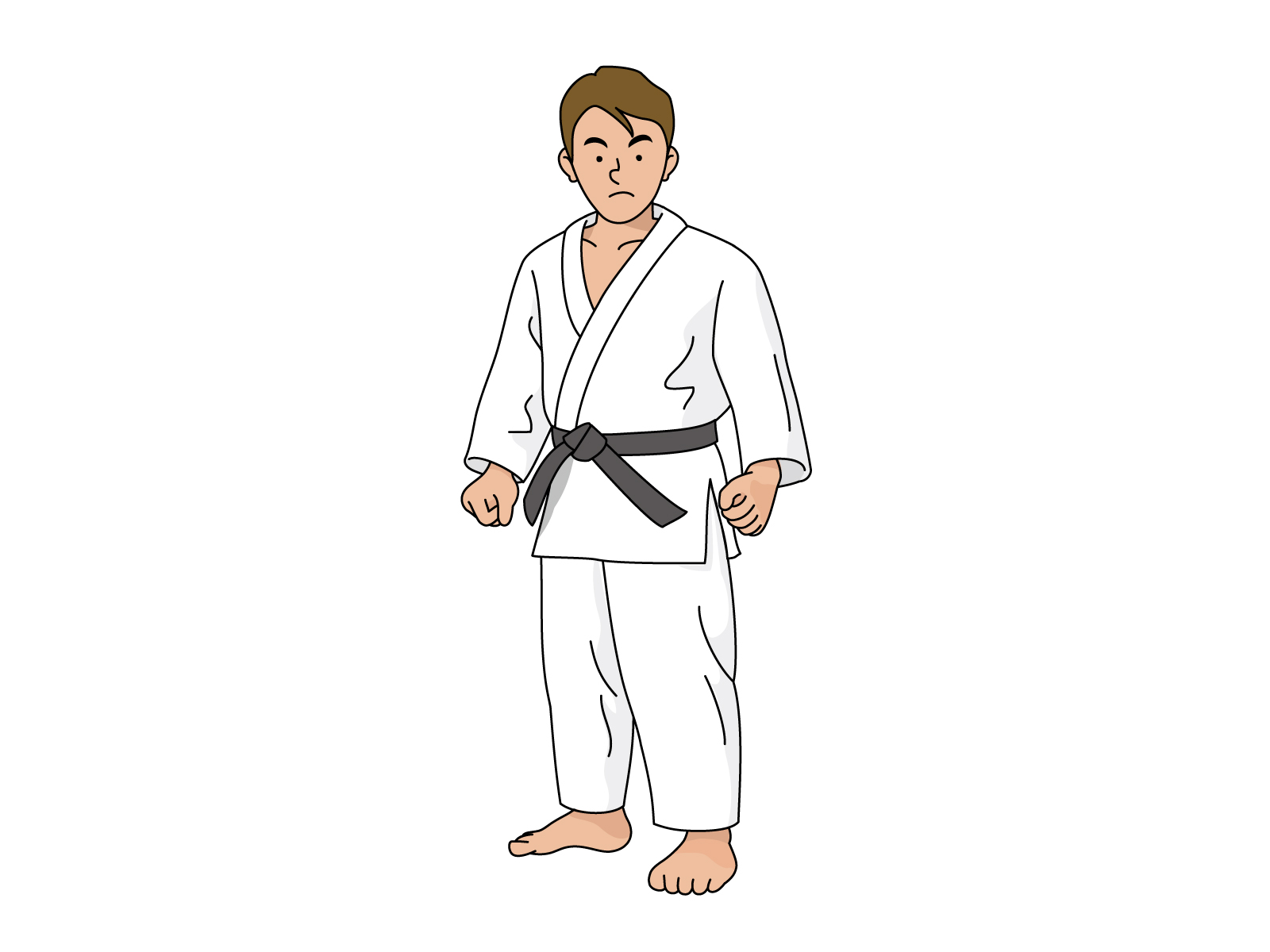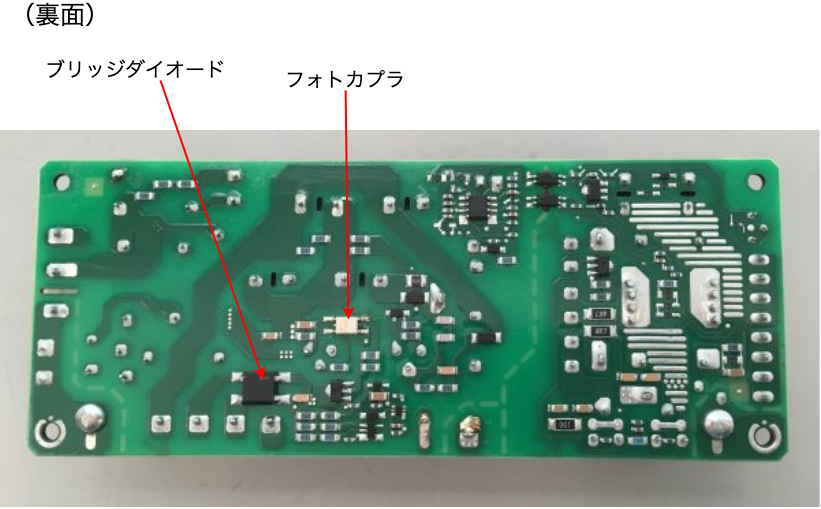Switching part
The rectified and smoothed direct current is turned ON / OFF by a transistor or MOS-FET to make a high frequency pulse. Both transistors and MOSFETs can be used in the sense of switching (ON / OFF), but when the capacitance increases, two transistors are used, but one MOSFET is sufficient.
The image of the high frequency pulse looks like this.

Trance
The upper high frequency pulse voltage is stepped down by a transformer.

Suppose that the input core has N1 wires wound around it, and the output core has N2 wires wound around it.
When a voltage of V1 (V) and a current of I1 (A) are passed from the input side, a current flows through the lead wire on the input side in the direction of the red arrow.
Then, according to the right-handed screw rule, a magnetic field (magnetic field) is generated downward in the core on the input side.
The magnetic field changes because the input side switches to flow or stop the current. As the magnetic field changes, a magnetic field in the opposite direction (upward) to this magnetic field is generated in the core on the output side, and an induced current flows on the output side.
V2 / V1 = N2 / N1Also, according to the law of conservation of energy, the power on the input side (voltage x current) and the power on the output side are the same.
V1 x I1 = V2 x I2
Control circuit
The control IC changes the ON / OFF time of the transistor and MOS-FET to control the output voltage constantly.
When the voltage is low, the ON time is lengthened, and when the voltage is high, the ON time is shortened.
Electronic components mounted on switching power supplies
Many electronic components are used in switching power supplies. Even if you cannot design a circuit, you can understand the power supply circuit block if you understand the part names and roles.
The explanation is based on the electronic components mounted on the 100W board-type power supply.

- Bridge diode (rectifier diode): A module that packages four diodes into one to convert AC waveform to DC full-wave rectification.
- Varistor: Used to protect elements such as ICs from static electricity and lightning surges by utilizing the characteristic that the resistance value changes depending on the voltage.
- Ceramic capacitor (capacitor): An electronic component that stores and discharges electricity (electric charge).
- X-capacitor (capacitor): It is a role to reduce the normal mode noise of the noise terminal voltage by connecting between the phases (between lines) of the power supply line and short-circuiting the lines at high frequency.
- Choke coil (inductor): Selects and removes only the common mode component that is the source of radiation noise.
- MOSFET: Abbreviation for Metal-Oxide-Semiconductor Field Effect Transistor, which translates as “metal oxide semiconductor field effect transistor”. The voltage is controlled by switching with this MOSFET.
- Photocoupler: An IC package containing an LED and a light receiving element (photodiode). When a current is passed through the LED, the light receiving element turns on. The LED and the light receiving element are electrically isolated.

